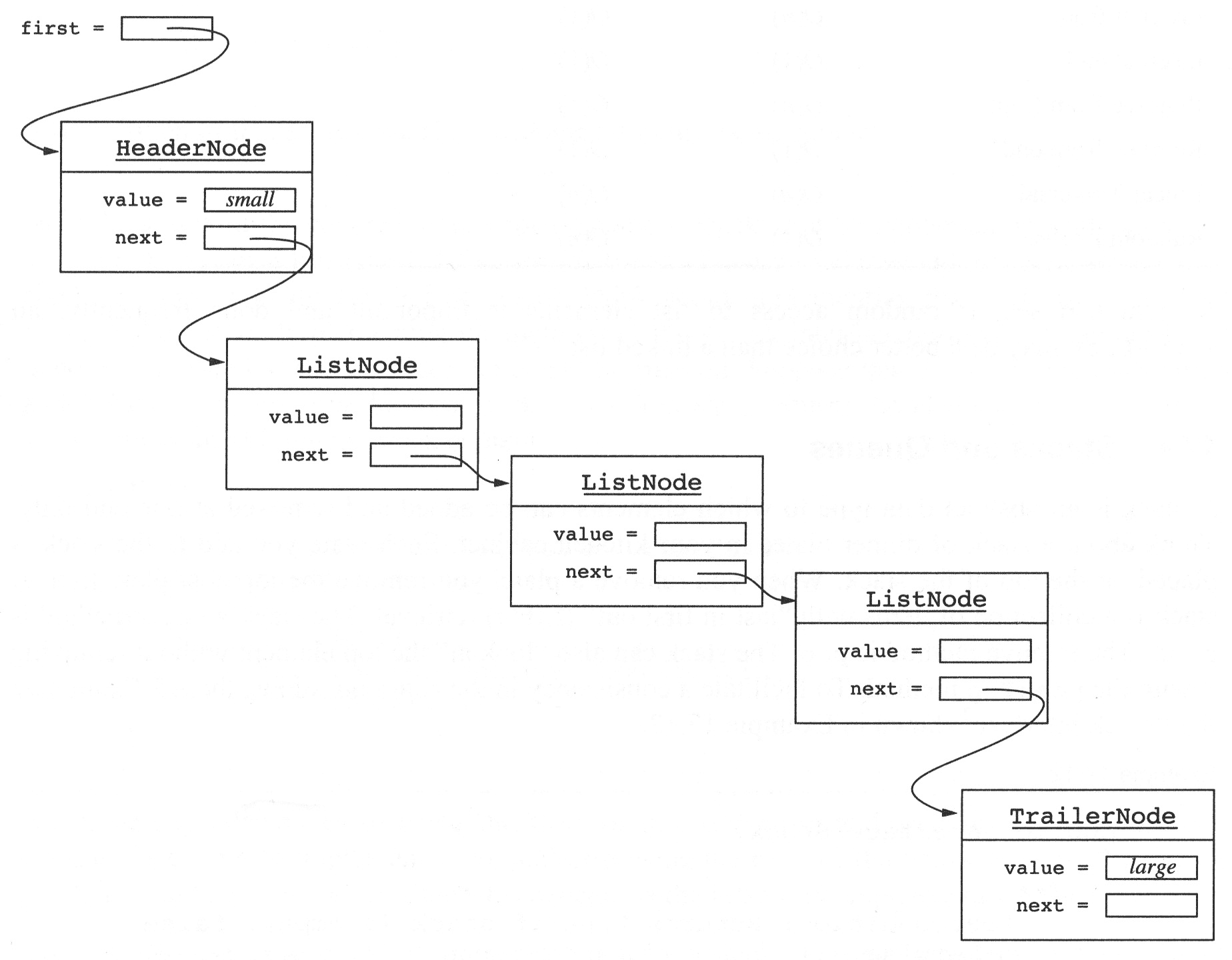When implementing a linked list or a doubly linked list, you
considered several cases; adding to the empty list, adding or removing the
first node, adding or removing the last node, adding or removing a middle
node. a header node is a node that comes before all other nodes in
the list. A trailer node is a node that comes after all of the
nodes in the list. If a list has a header node and a trailer node, most of
these cases are eliminated. We are left only with adding and deleting from
the middle of the list. The header and trailer nodes are not included when
printing the list contents or searching the list. They can be considered
"dummy" nodes.
-
The constructor of a linked list implementation that has a header and
trailer node would create a list similar to the one illustrated in Figure
29-6. For example, if the list is designed to hold values in increasing
order, the value in the header node will be a value smaller that all
values in the list and the value in the trailer node will be a value
larger than all values in the list.

Figure 29-6
You may see these terms used on the AP Exam but, when
implementing linked lists on the free-response questions on the AP
Exam, do not use header and trailer nodes unless explicitly told to do
so.

